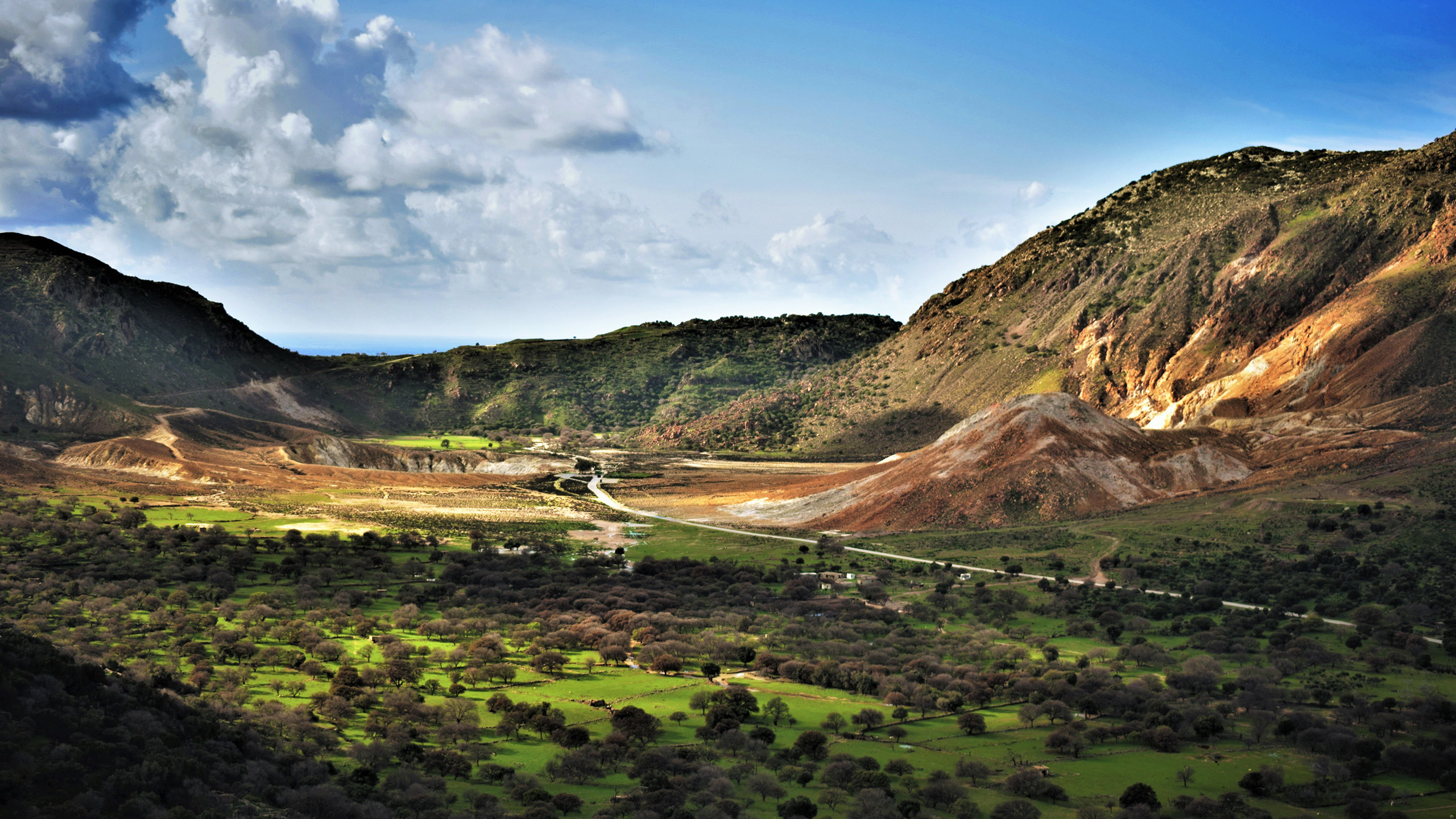
The route starts from the junction of the paved road leading to Nikia with the one descending to Lakkí. At the beginning of the route (site 1.1), from the northern rim of the caldera, there is a magnificent view of the large explosive funnel and the post-caldera domes. Subsequently, one can observe the old formations of Nisyros in the road cuts that move along the caldera slopes. Note the compact or laminated lava flows due to the flow and the ash layers they alternate with(site 1.2). At some points, the lava flows enter small ponds that the craters of the time hostedand mix characteristically with the sediments of these ponds.
In some areas (site 1.3), you can see large volcanic bombs piercing and deforming the ash layers, leaving visible traces of their fall direction, thus providing valuable information about the site of the crater from which theywere ejected. In the second section of the road descending towards Lakkí, two large feeder veins (site 1.4) ofthe early dactic lavas of Nisyros appear. A little further down (site 1.5), you will see that the fine-grained pumice from the last major eruption of Gyali has settled on the remnants covering the caldera's cliffs.
In the third, now level section of the road leading to Lakkí, you will first encounter the lavas of Mporiatiko (site 1.6), one of the younger post-caldera domes of Nisyros. Next, you can observe the layers of fragment and ash flows deposited by some collapses of the Visternia dome (site1.7), and further down, the fumaroles on the eastern slopes of the Loft dome (site 1.8). After refreshing yourself at the kiosk, take the path to Stefanos and descend to its floor (site1.9). Admire the sulfur crystals forming in the fumaroles. Do not attempt to collect them, as they are immediately destroyed and deprive others of the opportunity to see them. Listen to the roar of the geothermal fluid as it rises to the surface. Be careful not to touch rocks and fluids withclothing and backpacks as they are quickly destroyed. If you visit the crater during the rainyseason, you will enjoy the spectacle of boiling mud. Most of the floor of Stefanos turns intoboiling mud. On your return, you can observe next to the southwestern edge of Stefanos the crater of Mikros Stefanos. Next, take the path to the craters of Phlegyas (or Alexander) (site 1.10), Polybotis, Mikros (site1.11) and Megalos (site 1.12), as well as all the others found in the Loft area. The descent (with great care and for capable climbers) to the southern part of the Megalos Polybotis crater is worth it to admire the finely stratified lake sediments that hosted it before the eruptions of 1871-1873, as well as the countless fumaroles. If the wind is not satisfactory, avoid descending to thefloor of Polybotis. The accumulation of carbon dioxide, being heavier than air, does not make the stay there safe if the air is not adequately refreshed.

